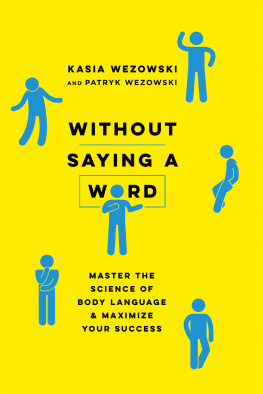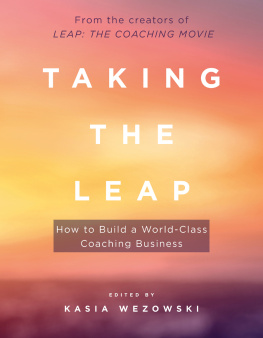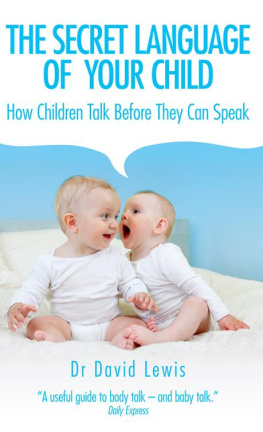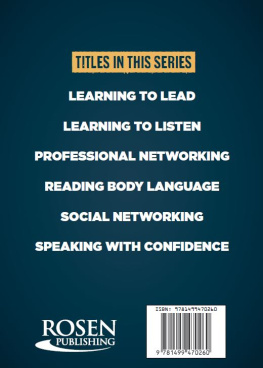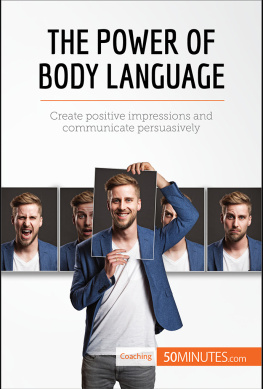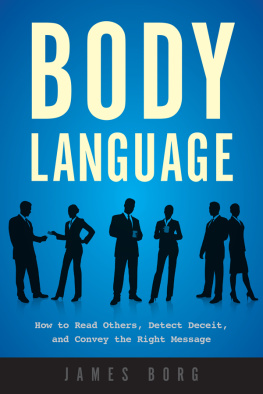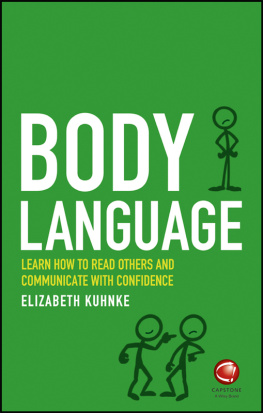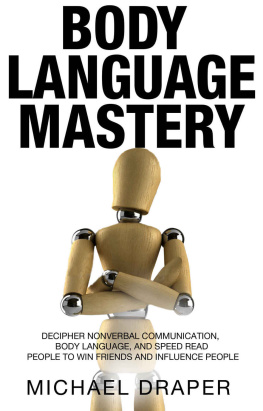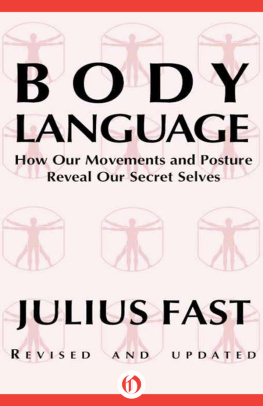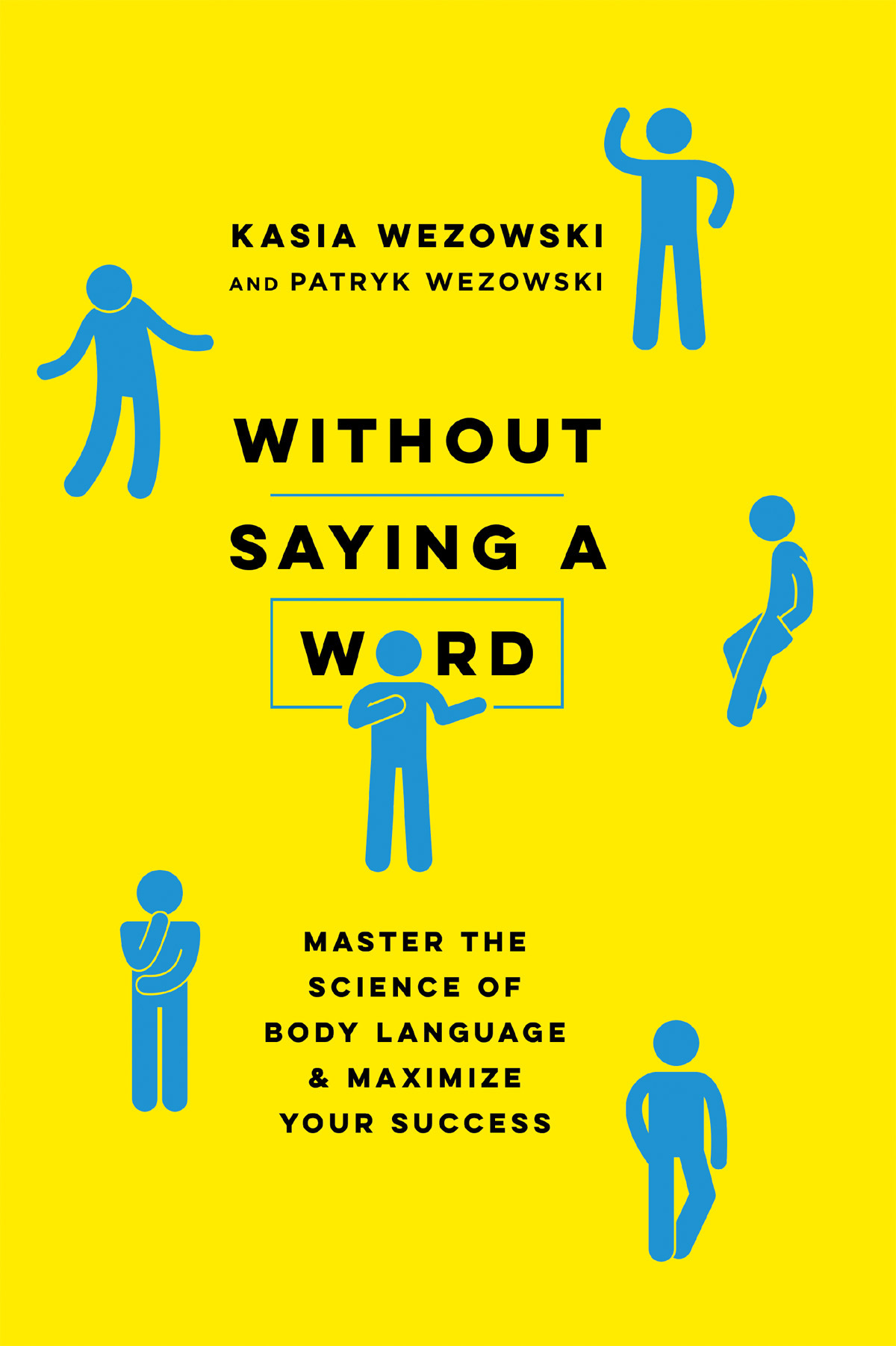2018 Kasia Wezowski and Patryk Wezowski
All rights reserved. No portion of this book may be reproduced, stored in a retrieval system, or transmitted in any form or by any meanselectronic, mechanical, photocopy, recording, scanning, or otherexcept for brief quotations in critical reviews or articles, without the prior written permission of the publisher.
Published by HarperCollins Leadership, an imprint of HarperCollins.
Drawings by Magdalena Dabrowska.
Book design by Elyse Strongin, Neuwirth & Associates.
Epub Edition June 2018 9780814439746
Library of Congress Cataloging-in-Publication Data
Names: Wezowski, Kasia, author. | Wezowski, Patryk, author. | Wezowski, Patryk. Lichaamstaal. English
Title: Without saying a word : master the science of body language and maximize your success / Kasia Wezowski and Patryk Wezowski.
Description: New York : American Management Association, [2018] | Originally published in Dutch in 2013 as Lichaamstaal by Patryk Wezowski & Kasia Wezowski | Includes bibliographical references and index.
Identifiers: LCCN 2018003567 (print) | LCCN 2018005276 (ebook) | ISBN 9780814439746 (ebook) | ISBN 9780814439739 (pbk.)
Subjects: LCSH: Body language. | Success.
Classification: LCC BF637.N66 (ebook) | LCC BF637.N66 W49 2018 (print) | DDC 302.2/22dc23
LC record available at https://lccn.loc.gov/2018003567
ISBN 978-0-8144-3973-9
Printed in the United States of America
18 19 20 21 22 LSC 10 9 8 7 6 5 4 3 2 1

www.CenterForBodyLanguage.com
Contents
Guide
The knowledge contained in this book is the result of more than two decades of passion for body language and many years of training in the field of nonverbal communication, in the course of which we received much valuable feedback from many thousands of participants. We are most grateful to our certified trainers who have carried out excellent work worldwide on behalf of the Centre for Body Language.
We would like thank our long-term partners around the world: Antonio Sacavem and Ana Sacavem (Portugal), Husam Al-Eid (MENA Region), Jose Manuel Jimenez and Baldiri Pons (Spain), Leopoldo Uprimny (Columbia), Laura Justicia (Argentina), Juan Carlos Garcia (Panama), Caroline Matteucci (Switzerland), Serkan Tunc (Turkey), Muhammad Ali (Pakistan), Roberto Micarelli (Italy), Eddy Vandeweyer, Jazz Jagarnathsingh (the Netherlands), Dana Ketels, Sofie-Ann Bracke (Belgium), and Mills Wong (Hong Kong). We are similarly grateful to over a thousand other trainers from around the world, who use our methodology and have thereby contributed over the years to the wider dissemination of our approach to body language.
Friends who provided us with interesting ideas, partners and course participants who gave us valuable feedback, and other people to whom we owe a debt of gratitude for their willingness to spread the ideas of the Centre for Body Language include Nancy De Bonte, An Declercq, Peter Saerens, Ann Van Den Begin, Annemie Janssens, Cline de Crombrugghe, Michael Cianchetti, Don Wells, Geert Van de Velde, Karolina Szczepankowska, Magdalena Dabrowska, Saskia Smet, Marie-Rose Mens, Patrick Adler, Susan Ockers, Kevin de Smet, Jean-Louis de Hasque, Tom Coreynen, Tom Van Diest, Dirk Vermant, Robin Vissenaekens, Hilde Vernaillen, Matt Roosen, Carine Cappelle, Guido Poff, Roland Duchatelet, Wim Hoeckman, Bart Van Coppenolle, Karl Raats, Roy Martina, Pascale Van Damme, Robin Vissenaekens, Emmanuel Mottrie, Gina De Groote, Bart Loos, Guy Vereecke, Frietjhof Croon, Walter Van Gorp, Eric de Vries, Jos Theunissen, Johan Spruyt, Richard Barrett, Bruno Desmet, Wim Hoeckman, Greg S. Reid, Glenna Trout, Dirk Vermant, Roland Duchatelet, and Alan Cohen.
The scientific and academic information contained in the book is the result of more than 150 years of research into body language. Huge contributions to the generation and interpretation of this accumulated wisdom have been made by numerous professors and scientists, many of whom have influenced the content of the following pages. Consequently, we wish to express our heartfelt thanks to Duchenne De Boulogne, Charles Darwin, Robert Plutchik, Carroll Izard, Robert Rosenthal, Chris Kleinke, Robert Goldberg, Edward Hall, Gerard Nierenberg, Henry Calero, Desmond Morris, Paul Ekman, Wallace Friesen, Alan Pease, Ekhard Hess, Mark Knapp, Judee Burgoon, Michael Argyle, Dan OHair, Barry Schlenker, and Ralph Exline.
Last but not least, we would also like to thank our many associates and colleagues, whose willingness to exchange ideas and information about body language and nonverbal communication has had a significant impact on our activities over the years. These include Carol Kinsey Goman, Mark Bowden, Beverly Flaxington, Renate Mousseux, Ian Trudel, Elizabeth Kuhnke, Mark McClish, Dominika Maison, Robert Phipps, Greg Williams, Henrik Fexeus, Joe Navarro, and Rick Kirschner.
Your Body Language Intelligence Determines Your Success
Several years ago, Patryk and I were invited to predict the results of a startup pitch contest in Vienna, where 2,500 tech entrepreneurs were competing. We observed the presentations, but rather than paying attention to the ideas the entrepreneurs pitched, we watched the body language and microexpressions of the judges as they listened. We gave our predictions of who would win before the winners were announced; as we and the audience soon learned, we were spot on. We had spoiled the surprise.
Two years later we were invited back to the same event. This time, instead of watching the judges, we observed the contestants. Our task was not to guess the winners, but to determine how presenters nonverbal communication contributed to their success or failure.
We evaluated each would-be entrepreneur on a scale from 0 to 15. People scored points for each sign of positive, confident body language, such as smiling, maintaining eye contact, and persuasive gesturing. They lost points for each negative signal, such as fidgeting, stiff hand movements, and averted eyes.
We found that contestants whose pitches were rated in the top eight by competition judges scored an average of 8.3 on our fifteen-point scale, while those who did not place in that top tier had an average score of 5.5. Positive body language strongly correlated with more successful outcomes.
Weve found similar correlations in the political realm. Lets look at the last two U.S. presidential elections.
During the 2012 campaign, we conducted an online study in which a thousand participantsboth Democrats and Republicanswatched two-minute video clips featuring Barack Obama and Mitt Romney at campaign events delivering both neutral and emotional content.
Webcams recorded the viewers facial expressions, and our team analyzed them for six key emotional responses identified in psychology research: happy, surprised, afraid, disgusted, angry, and sad. We coded for the tenor of the emotion (positive or negative) and how strongly it seemed to be expressed. This analysis showed that Obama sparked stronger emotional responses and fewer negative ones. Even a significant number of Republicans16 percentreacted negatively to Romney.
When we analyzed the candidates body language, we found that Obamas resembled those of our pitch contest winners. He displayed primarily open, positive, confident positions congruent with his speech. Romney, by contrast, often gave out negative signals, diminishing his message with contradictory and distracting facial expressions and movement.

